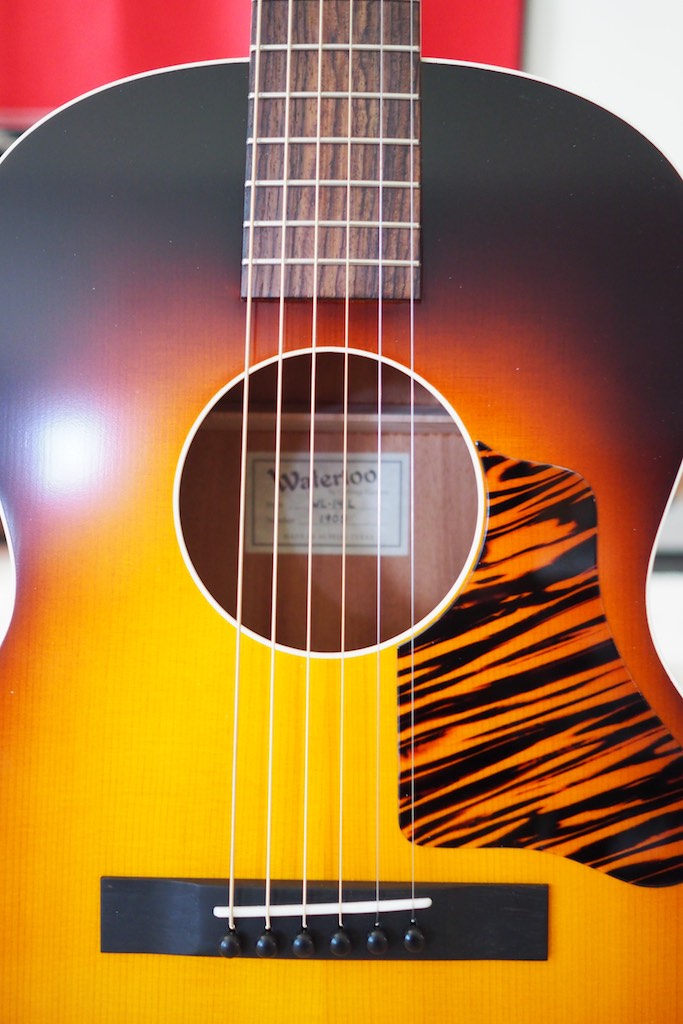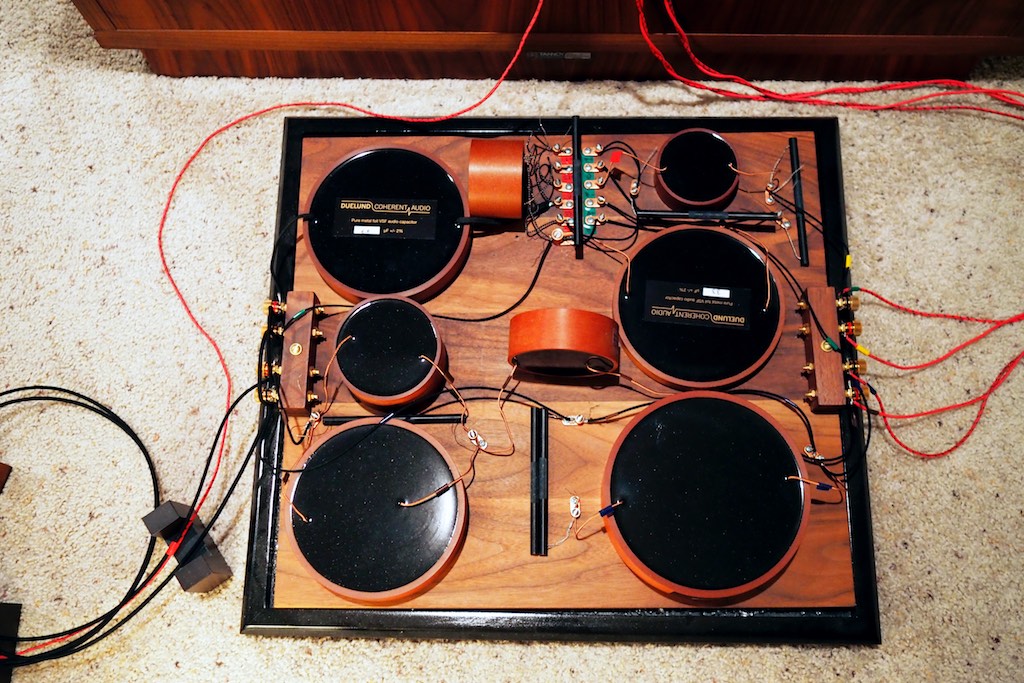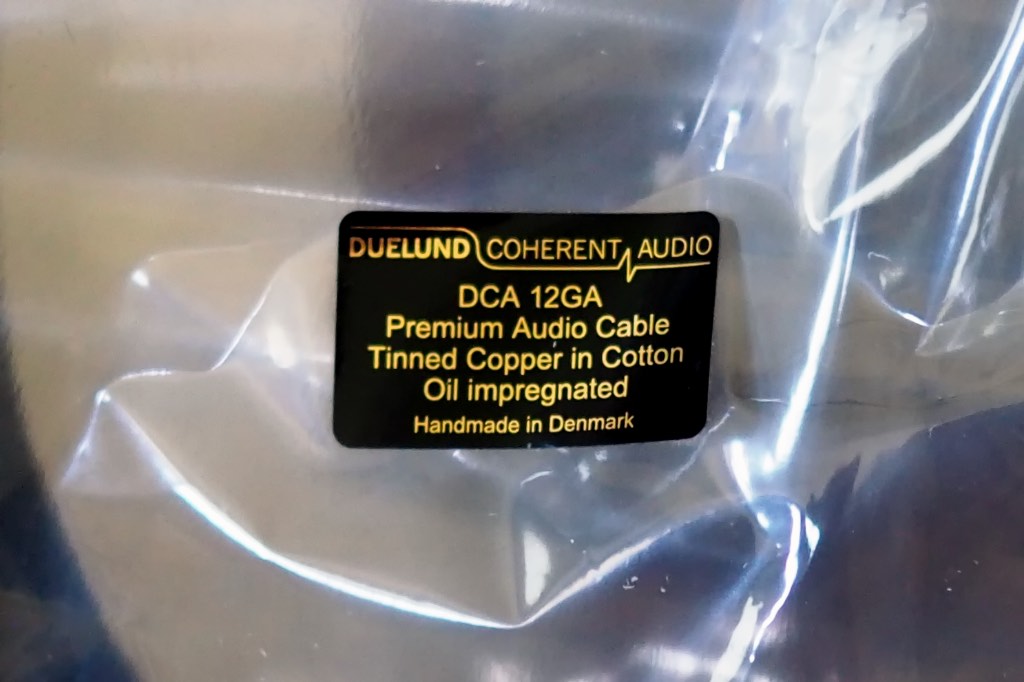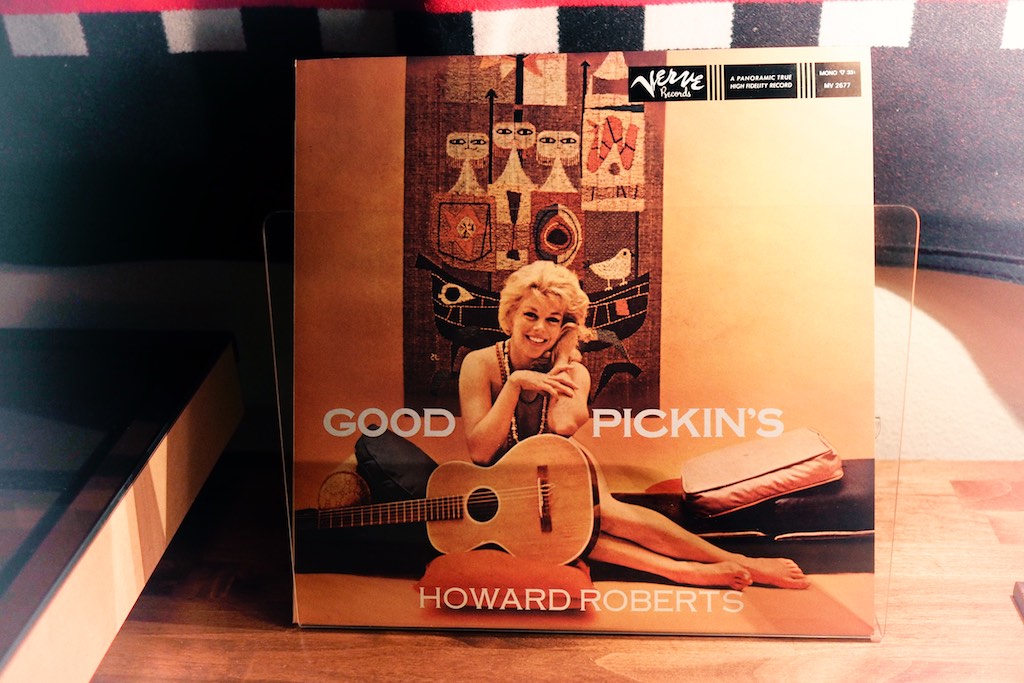Remember my Big Round Tone post from a couple of weeks back, where I discussed the relationship of tone to gauge size for headshell leads, interconnects, speaker cables, and speaker/equipment internal wiring?
In relative terms, you get bigger, richer, and rounder tone as gauge size decreases (fatter wire).
You can think of it in guitar terms too. The little skinny 1st string E (far right, above) gives a brighter and more penetrating tone, and its chubby big brother, the 6th string E (far left, above), which gives a rich and bassy tone.
While the reasons for this relationship of tone to gauge size is a little different between guitars and audio wire, the relationship of gauge size to tone still holds, and is really useful in audio because you can use it to fine tune your system to get the sort of tone you're after.
Need more clarity and brightness? Go with skinnier wire gauge size. Need more richness and warmth? Go with chubbier wire gauge size.
I can't believe how fast time goes by, I've had my Tannoy Westminster Royal SE loudspeakers now for over 8 years. 8 years! I can't hardly believe it's been that long!
The Westminster's are a terrific speaker musically and sonically, and my appreciation for them grew ten-fold after building crossovers for them out of Duelund CAST components.
That was also my first experience with modifying equipment - nothing like diving off into the deep end of the pool to learn how to swim!
Besides being great to listen to music with, the Westminster's are great for reviewing, because that little high-frequency brass horn you see in the center of the dual concentric driver is ultra-revealing of small differences in just about anything, whether it be wire, resistors, capacitors, inductors, or what have you.
When you get the overall tone dialed in perfectly the big Westminster's are amazing, but if something is a mismatch you'll know it in a hurry.
I'm always fiddling with my system as an audio writer, because something is always changing in it.
I've been using Duelund DCA12GA as speaker cables for my West's, and the Duelund crossovers are wired with Duelund DCA16GA wire in the low-frequency part of the circuit, and Duelund DCA20GA wire in the high-frequency part of the circuit.
Just for kicks, yesterday I decided I would swap out the DCA20GA in the HF crossover circuit for some DCA12GA to hear what would happen.
Intuitively it seems like way too fat of wire to use in a HF circuit, but you never know what'll happen until you try it.
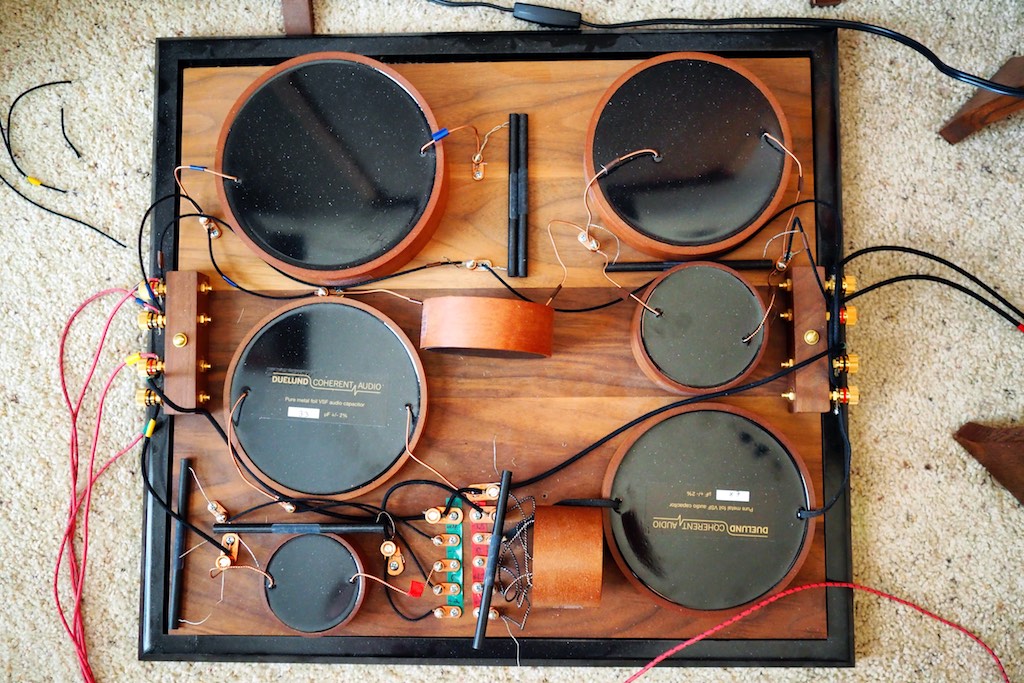
Duelund CAST crossover with DCA12GA added to the HF circuit (the bottom part of the crossover). That's the DCA20GA in the upper left corner that I took out.
The DCA12GA wire is so much bigger than the DCA20GA wire that it wouldn't fit into the standard McMaster-Carr setscrew lugs I use in my crossovers, so I had to use some much bigger McMaster-Carr setscrew lugs to get the DCA12GA to fit. Luckily I had the foresight to order some of the big McMaster-Carr setscrew lugs awhile back, so I had some on hand.
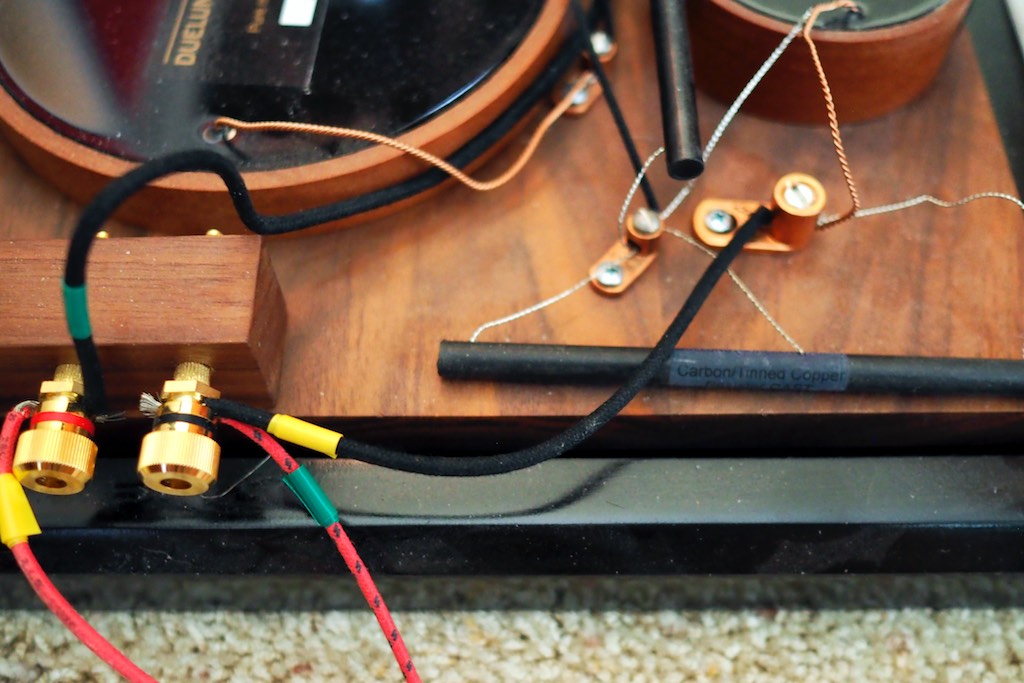
Driver side closeup of DCA12GA wire (foreground) and prototype Duelund CAST resistors with tinned-copper leads.
It took me about an hour to redo everything in the HF crossover circuits with Duelund DCA12GA. Note the size difference with the two versions of the McMaster-Carr setscrew lugs in the middle-right of the photo above. The DCA12GA is a lot bigger, necessitating the big lugs.
By the way, those prototype Duelund CAST resistors with the tinned-copper leads you see in the photo above have really nice tone.
In the upcoming Duelund crossover project for my vintage Altec A7 Voice of the Theatre loudspeakers, Frederik is indulging me a little (ok a lot!) with an idea I have for the resistors.
For each resistor specified in the Hiraga-style circuit, I asked Frederik if he would mind building resistors that have two paralleled resistive elements, as well as use chubbier leads than he usually does.
My rationale was that experience has taught me that I get bigger tone with paralleled resistors and fatter leads, and I can push them harder without overloading them.
I'll be pretty embarrassed if it doesn't work out like I think it will, but I'm really excited to find out!
Ok, enough on my little resistor diversion, now back to the effect the DCA12GA in the HF circuit had on the musicality and sonics of the music playback.
I had Howard Robert's Good Pickin's on the turntable, so after letting the system warm up suitably, I started listening.
The difference in tone with the DCA12GA in the HF crossover circuit was dramatic, with the presentation being richer, bigger, and warmer, by a lot.
Timbral textures were more obvious, and the sense of spaciousness in the recording opened up a lot.
The DCA20GA sounded smoother, a little leaner, and more articulate, but the DCA12GA was very enticing.
I did notice that with the DCA12GA the sense of beat and tempo were a little more relaxed than I liked, but still good.
It never ceases to amaze me how much difference a few short lengths of wire can make on system voicing.
I'm thinking that maybe part of the HF circuit wired with DCA12GA and part with the DCA20GA might give a very nice blend of musical & sonic qualities, so I might try that too.
Of course the point of the post is that it is worth experimenting with differing wire gauge sizes to voice a system, and there's no magic recipe other than to roll up your shirt sleeves and try a few combinations to see what happens, until you find the favored combination.
Have fun experimenting, and as always thanks for stopping by, and may the tone be with you!




